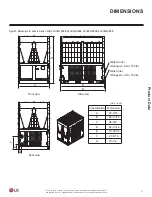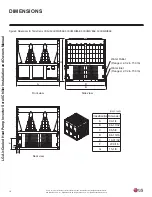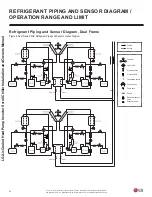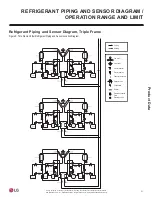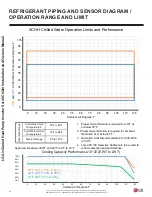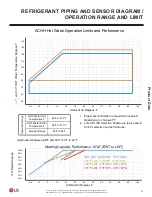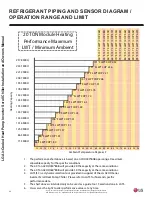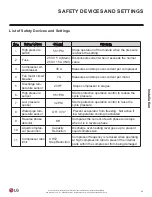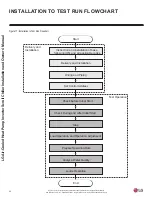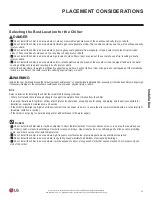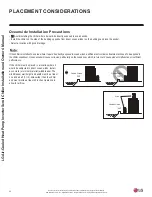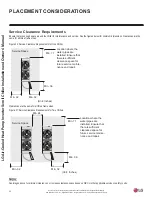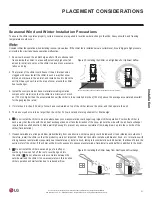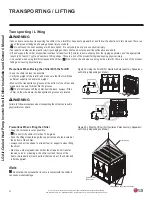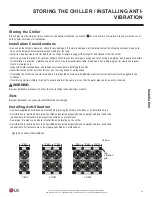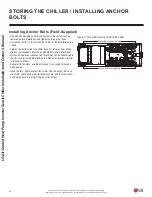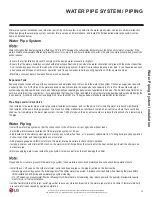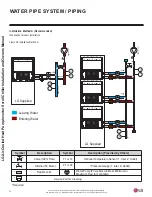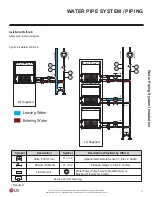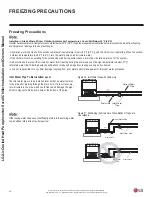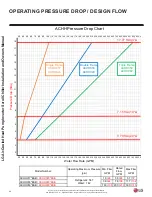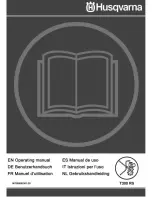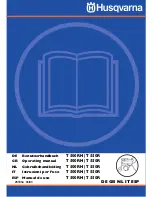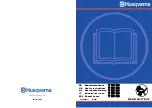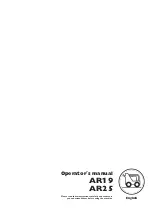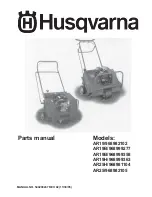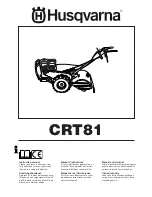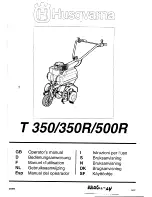
31
Installation
Due to our policy of continuous product innovation, some specifications may change without notification.
©LG Electronics U.S.A., Inc., Englewood Cliffs, NJ. All rights reserved. “LG” is a registered trademark of LG Corp.
PLACEMENT CONSIDERATIONS
Seasonal Wind and Winter Installation Precautions
To ensure the chiller operates properly, certain measures are required in locations where strong cold winds, heavy snowfall, and freezing
temperatures could occur.
Consider chiller fan operation when installing in snow-prone areas. If the chiller fan is installed below a certain level, it could trigger a high pressure
error within the circuit and cause operation malfunction.
1. Snow could access the air discharge outlet of the condenser and
freeze inside the chiller; in areas with potentially high snowfall
amounts, install a cover over the chiller to prevent snow accumu-
lation on its top.
2. The interior of the chiller could freeze if the air inlet becomes
clogged with snow. Install the chiller in such a way that snow
drifts do not blow into the air inlet, and install a hood to block the
unit from heavy snow. Clear the area of snow around the chiller
heat exchanger.
3. Install the concrete slab or base materials including isolation
component or material so that the chiller is a minimum of 4 inch-
es (102 mm) higher than the accumulated snow (the chiller is to be installed 4 inches [102 mm] above the average accumulated snowfall
for the geographical area).
4. If more than 4 inches (102 mm) of snow has accumulated on top of the chiller, remove the snow, and then operate the unit.
5. The base or pad size is to be larger than the chiller. Follow local and state requirement for final design.
6.
Do not install the chiller in an area where heavy snow accumulation could negatively impact chiller operation. Position the chiller in
such a way that the side with the air heat exchanger does not face the direction of the snow (ensure the side with the air heat exchanger
is parallel to snowfall direction). Add a wall high enough to prevent any snow accumulation from being drawn up into the coil side of the
chiller (field installed).
7. If seasonal winds are strong and blow predominately from one direction, chiller capacity could be reduced or load imbalance could occur;
therefore, install the chiller so that the product cycle is not impacted. If that isn’t possible, install a windbreaker, hood, etc. In locations with
strong seasonal winter winds (especially near coastal areas), install a hood, taking into consideration wind direction, that doesn’t block the
suction inlet of the chiller. If the chiller will be directly exposed to seasonal winter winds, field-install a wind baffle (in addition to the hood).
8.
Do not install the chiller near an edge of a rooftop or
overhang. Snow can fall off the roof or overhang and into
the chiller. Do not allow snow to accumulate between the
outside wall and the chiller. If snow accumulates in this location,
chiller operation will malfunction due to reduced airflow.
Min. 4 inches above snow accumulation (Stand plus Spring Isolation)
Figure 22:
Installing the Chiller on a High Base For Optimum Airflow.
Figure 23: Installing the Chiller Away from Rooftops and Overhangs.

